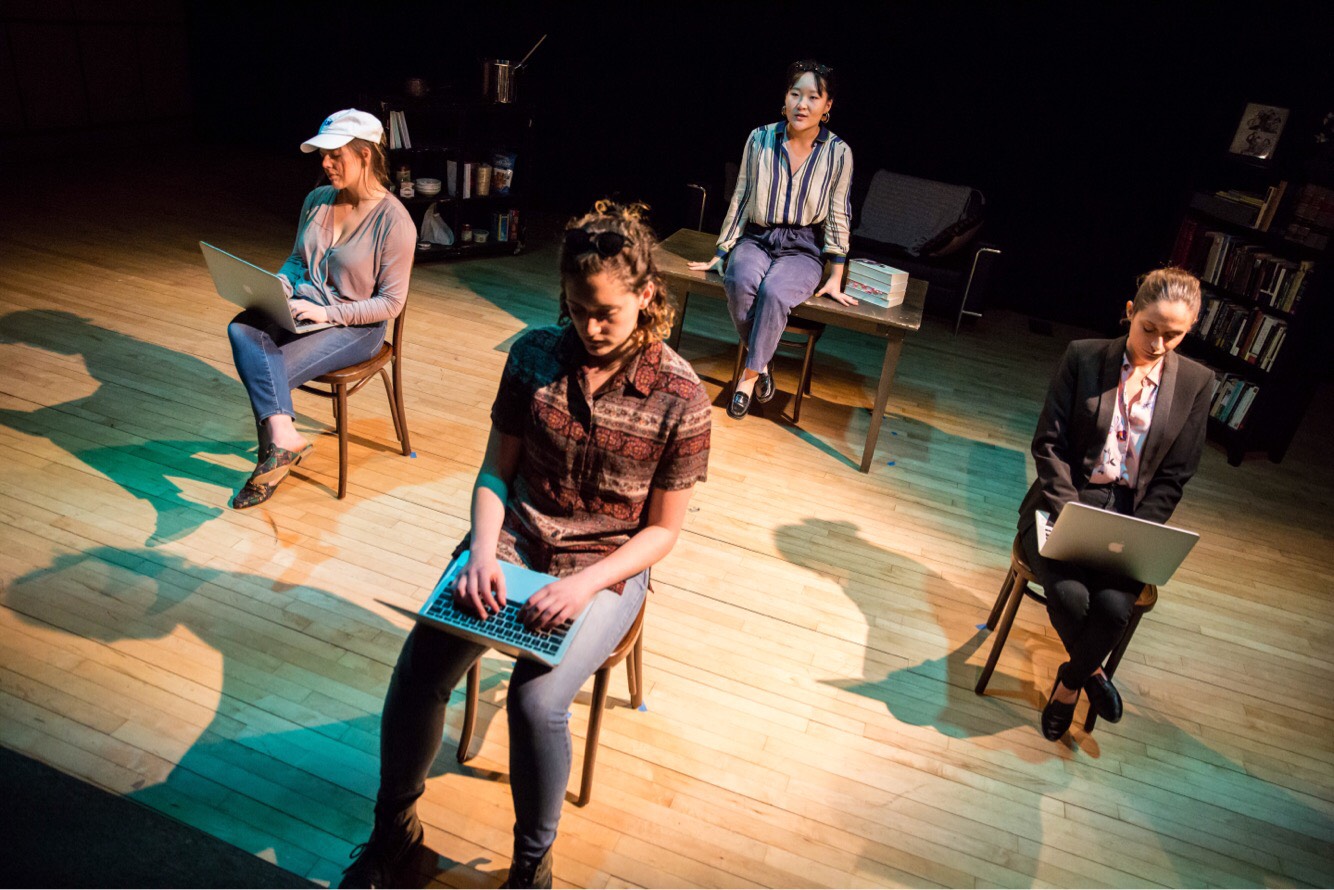
Nina Goodheart
“Friendship and reading take time, but I tend to be pushy with both … I blaze through books in single sittings, and similarly, crave those day-into-night, coffee-into-beer conversations where you learn everything about a person in one heady rush.” These are the words of Sarah Chihaya, one of four characters in “Contemporaries,” written by Erica Wachs ’18. This production is based on a true story that revolves around a group of friends — three professors and an author — who decide to spend their summer creating “The Slow Burn,” a blog-style analysis of Elena Ferrante’s Neapolitan novels: “My Brilliant Friend,” “The Story of a New Name,” “Those Who Leave and Those Who Stay” and “The Story of the Lost Child.”
Jill Richards, Katherine Hill, Mervey Emre and Sara Chihaya bond over blog-editing sessions and intellectual conversations on topics like the relationship between a character and a work or the progression of betrayed partners in convoluted relationships in literature. The four women manifest their inner literary theories through these blog posts, while simultaneously dealing with the expectations of adroitness in the academic world and the pressure of receiving tenure in their respective prestigious institutions.
The characters in the story get so invested in “The Slow Burn” that they begin to lose track of who they are as people. The distinction between reality and fiction grows more and more blurred, and the question of whether a person can exist outside of her work, an intellectual outside of academia, is left for the audience to answer.
The play is set in New Haven, Connecticut, but as Ferrante’s novels become more and more prevalent in the lives of the characters, the setting begins to shift from reality to fiction, moving to Naples, Italy. The presentation of fragmented intervals is superb, with exaggerated Italian accents and the enactment of comical Italian drama, complete with hand jesters and pasta-making.
The technical elements make the transitions in and out of actuality easier to recognize, with the lights making the stage look like a television in the Italian segments.
The enactment of the novel is hard to follow, but it only takes a brief summary of it to understand its influence on Jill, who is played by Phoebe Cardenas ’21. Cardenas acts beautifully, portraying a struggle that draws the attention of the audience. In one particular part of the show, Cardenas exemplifies a build-up of emotion with a peak that is so moving it feels real.
Jill idiosyncratically parallels one of the characters in the Ferrante series. As a writer and an editor, she gets so involved in the entire thing she loses herself and progressively decays into a spiral of identity loss.
The complex personalities of the characters Sarah, performed by Agnes Enkhtamir ’19, and Katherine, performed by Emily Harburg ’18, are excellently portrayed. They criticize the foolish academics who act like professionals, while constantly fearing they fit this description.
The show is filled with academic language and liberal fever, but the attachment the characters have to communism is repetitive and doesn’t add to the storyline, and the intensity in which feminism is discussed takes away from its implicit value in the play. Merve Emre is denied tenure the first time she applies, after an interview filled with questions regarding the effect motherhood has made on her career. Merve is played by Stella Shannon ’18, who conveys the difficulty of balancing her identity as a writer and as a mother. The character cannot decide whether her child makes her less of a writer. She doesn’t reach a conclusion, but she knows that she loves her baby and values her career.
In one of the most meaningful symbols in the play, Jill carries Merve’s child, but she is actually cradling a book. Themes such as the value of literature, mental illness and feminism are effectively shown in scenes such as this, where a character values a book like she would a newborn child, or when a perfectly adept female professor gets denied from receiving tenure, or when a brilliant intellectual falls prey to her art. The dialogue, however, overuses these terms.
The play’s strongest moments are the interactions between its characters. The complexities in their relationships and the honesty in their conflicts highlights the power of female friendships in times of struggle. “Contemporaries” shows that even if you lose yourself in your work, your relationships will lead you to yourself again.
Razan Sulieman | razan.sulieman@yale.edu







